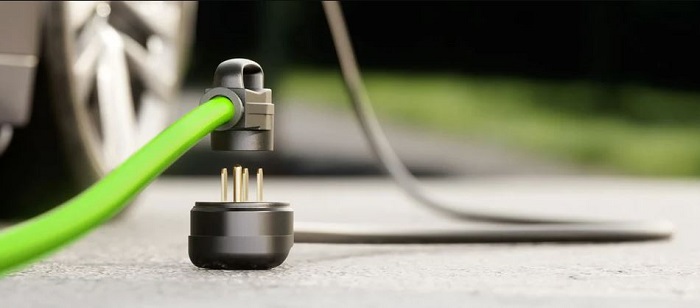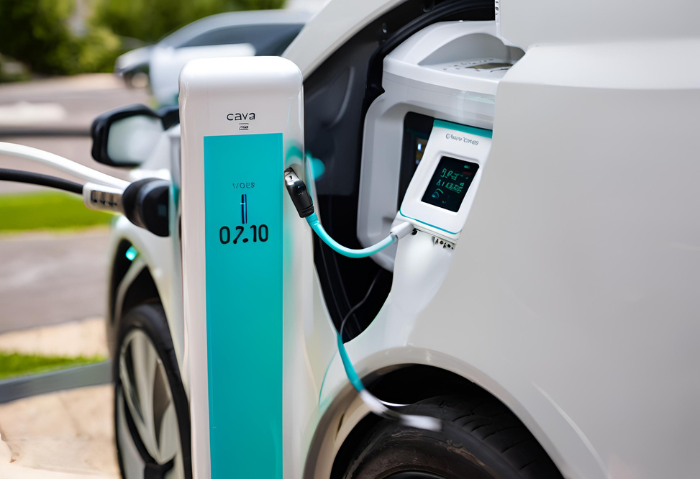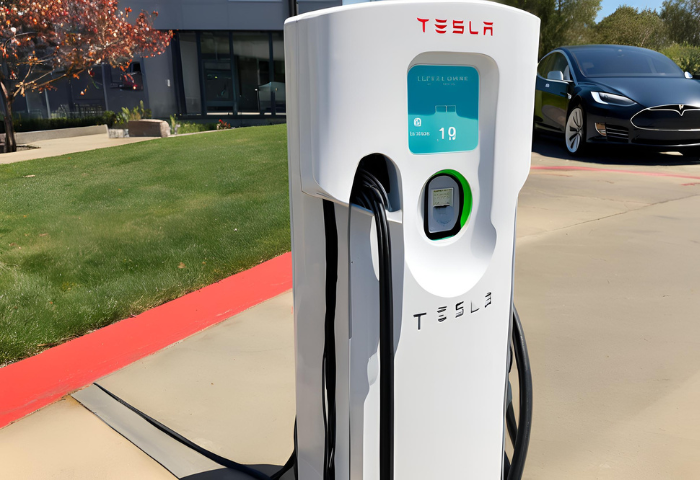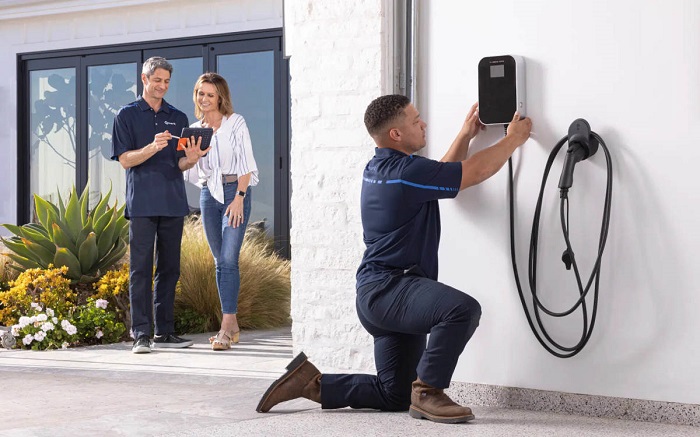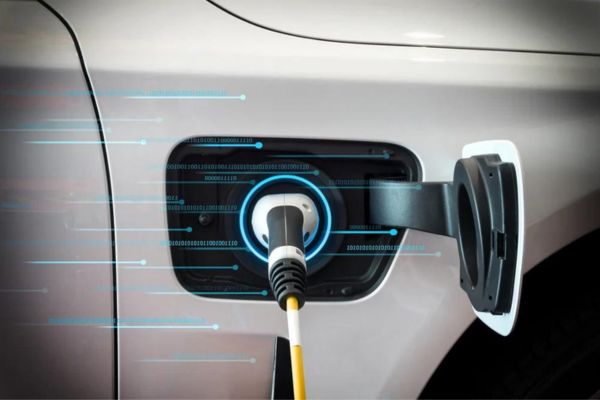NEMA 14-50 Outlets: Powering High-Demand Appliances
A NEMA 14-50 outlet is a high-voltage electrical outlet commonly used for appliances with significant power demands, such as electric vehicle (EV) chargers and electric ranges. These outlets typically provide 240 volts and 50 amps, offering a higher power capacity compared to standard household outlets.
NEMA 14-50 outlets are easily identifiable by their distinctive T-shaped configuration with four prongs. Due to their high power output, only certified electricians should install and use these outlets to ensure safety and proper operation.
NEMA 14-50 Features
The NEMA 14-50 is a standardized electrical outlet commonly used for high-power appliances, including electric vehicle chargers. Here are its key features:
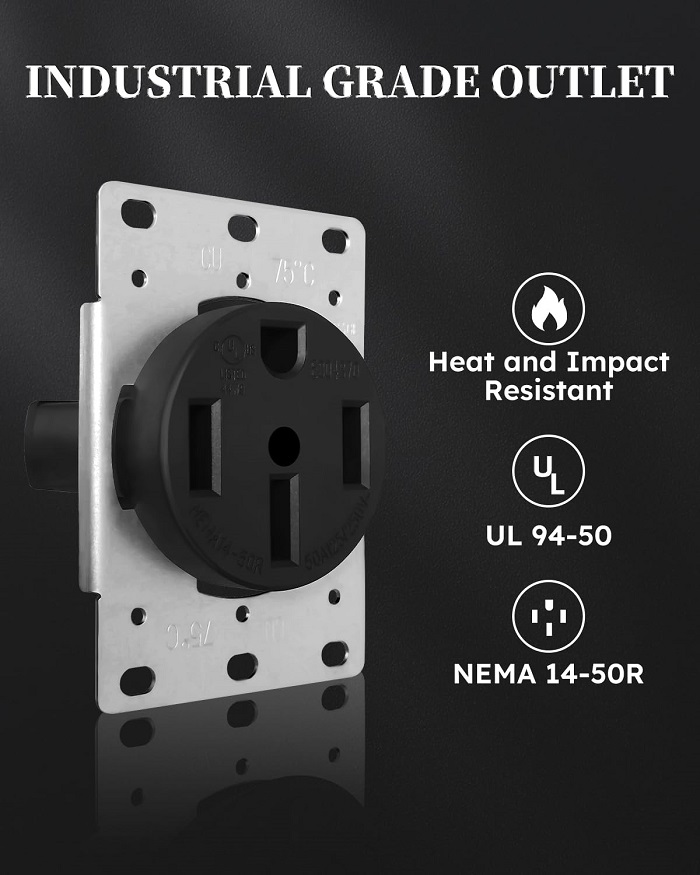
Amperage and Voltage Rating:
- The NEMA 14-50 outlet is rated for 50 amps and 240 volts.
- This high amperage and voltage rating make it suitable for charging electric vehicles quickly, as it can deliver a substantial amount of power to the vehicle’s battery.
Prong Configuration:
- The NEMA 14-50 outlet has a distinctive prong configuration consisting of four prongs.
- Hot Line 1 (L1): This prong carries one of the “hot” wires from the electrical panel, delivering 120 volts of alternating current (VAC) to the outlet.
- Hot Line 2 (L2): The second hot line prong also carries 120 volts of alternating current (VAC) from the electrical panel to the outlet.
- Neutral (N): The neutral prong serves as the return path for the current and helps balance the electrical load. It is typically connected to the neutral bus bar in the electrical panel.
- Ground (G): The ground prong provides a safety connection to earth ground, offering protection against electric shock in the event of a fault or short circuit. It is connected to the ground bus bar in the electrical panel and to a grounding rod or other grounding system.
Benefits of NEMA 14-50 Outlets for EV Charging
Using a NEMA 14-50 outlet for EV charging offers several benefits compared to a standard outlet, primarily due to its higher amperage and voltage rating.
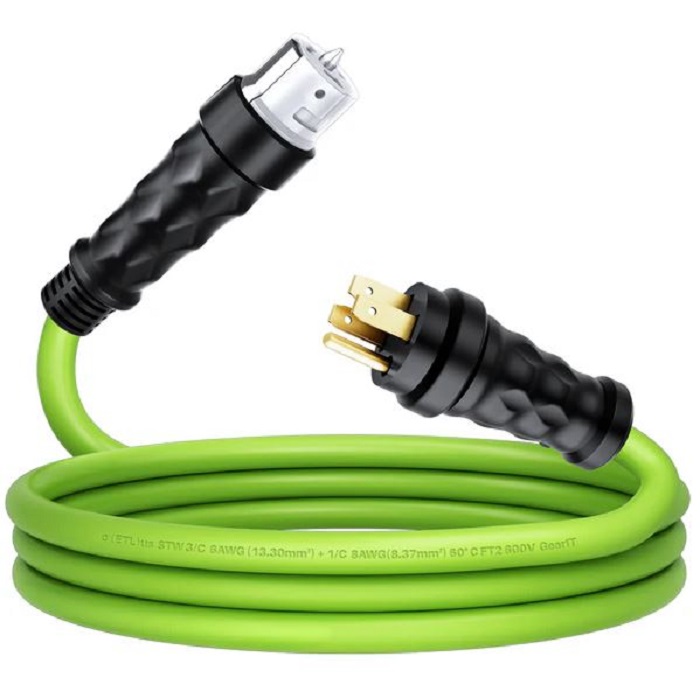
- Faster Charging Times: The NEMA 14-50 outlet is capable of delivering higher power levels compared to a standard outlet, thanks to its 240-volt rating and 50-amp capacity. This enables significantly faster charging times for electric vehicles. EVs equipped with onboard chargers compatible with this higher voltage and current can take full advantage of the increased power, reducing charging times by hours compared to charging from a standard 120-volt outlet.
- Convenience: While standard outlets can be used for EV charging, they typically provide lower power levels, resulting in longer charging times. By installing a NEMA 14-50 outlet, EV owners can enjoy the convenience of faster charging without the need for expensive upgrades to their electrical infrastructure. This is particularly beneficial for EV owners who rely on daily charging or have longer commutes, as it allows them to replenish their vehicle’s battery more quickly.
- Compatibility: Many electric vehicles come equipped with onboard chargers that are compatible with the higher voltage and current provided by a NEMA 14-50 outlet. This means that EV owners can take advantage of faster charging without requiring additional adapters or modifications to their vehicle’s charging equipment.
- Cost-Effectiveness: Installing a NEMA 14-50 outlet is a cost-effective solution for EV owners looking to upgrade their home charging setup. Retrofitting a NEMA 14-50 outlet is typically simple and less expensive than installing a dedicated Level 2 charging station, which may require professional installation and additional electrical work.
Uses of NEMA 14-50 Outlets
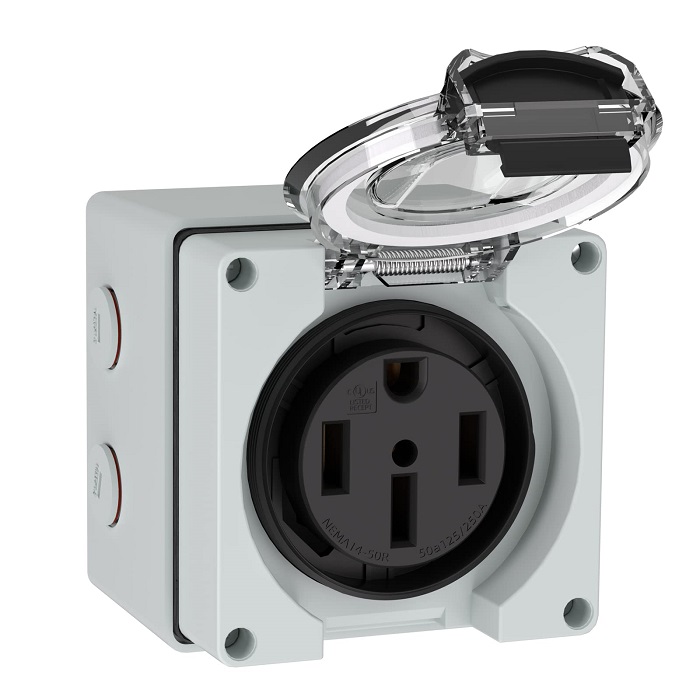
The primary use of NEMA 14-50 outlets is for Level 2 electric vehicle (EV) charging. These outlets provide the higher voltage and current required for Level 2 charging, allowing EV owners to charge their vehicles faster compared to standard Level 1 charging from a 120-volt outlet. Aside from EV charging, NEMA 14-50 outlets are also commonly used for other high-power appliances, including:
- Electric Dryers: Many electric dryers require a NEMA 14-50 outlet to power their heating elements efficiently. These outlets provide the necessary voltage and current for fast drying cycles, making them essential for residential laundry rooms.
- Ranges: Electric ranges and ovens often use NEMA 14-50 outlets to power their cooking elements. These outlets enable high-performance cooking with precise temperature control, making them popular choices for residential kitchens.
- Welders: NEMA 14-50 outlets are frequently used in workshops and garages to power welding equipment. The high amperage and voltage rating of these outlets support the power demands of welding machines, allowing for efficient and reliable operation.
Overall, NEMA 14-50 outlets serve a variety of applications beyond EV charging, including powering electric dryers, ranges, welders, and other high-power appliances.
NEMA 14-50 vs. Other High-Voltage Outlets
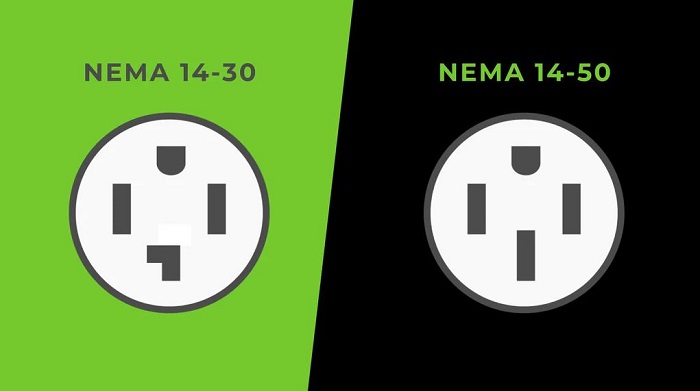
Here’s a brief comparison of the NEMA 14-50 outlet with other high-voltage outlets like NEMA 14-30, NEMA 6-50, and NEMA TT30-P:
| NEMA 14-50 | NEMA 14-30 | NEMA 6-50 | Travel trailer 30-amp plug, NEMA TT30-P | |
| Amperage | 50 amps | 30 amps | 50 amps | 30 amps |
| Voltage | 240 volts | 240 volts | 240 volts | 120 volts |
| Uses | Primarily used for Level 2 electric vehicle (EV) charging, as well as powering high-power appliances such as electric dryers, ranges, and welders. Provides faster charging compared to standard Level 1 charging outlets. | Commonly used for electric dryers and ranges that require less power than those compatible with a NEMA 14-50 outlet. Provides a lower charging rate compared to NEMA 14-50, suitable for appliances with lower power requirements. | Typically used for high-power equipment such as welders and industrial machinery. Similar to NEMA 14-50 in terms of amperage and voltage, it lacks the neutral prong, making it unsuitable for applications that require a neutral connection | It is intended to supply limited electrical power to travel trailers and recreational vehicles (RVs) for camping or other outdoor activities. It has a lower power output than NEMA 14-50 and can run basic appliances and gadgets in RVs. |
While all these outlets provide high-voltage power, they differ in terms of amperage, voltage, and intended uses.Because of its greater amperage rating and adaptability, the NEMA 14-50 outlet is particularly noteworthy. It can be used for a variety of purposes, such as Level 2 EV charging and high-power appliance powering.
Installation Considerations for NEMA 14-50 Outlets
When considering the installation of NEMA 14-50 outlets, it’s essential to keep the following points in mind:

- Professional Installation Is Necessary: A licensed electrician should always install NEMA 14-50 outlets due to the high voltage involved. Electricians have the expertise to ensure proper wiring, adherence to local electrical codes, and safe installation practices, minimizing the risk of electrical hazards or damage to property.
- Cost Considerations: While the cost of the outlet itself is relatively low, typically ranging from $10 to $30, the installation fees can vary depending on factors such as the complexity of the installation, accessibility of the wiring, and local labor rates. Electrician installation fees for a NEMA 14-50 outlet can range from $200 to $500 or more, depending on the specifics of the installation. It’s important to obtain quotes from multiple electricians and factor in installation costs when budgeting for the installation of NEMA 14-50 outlets.
Safety Information
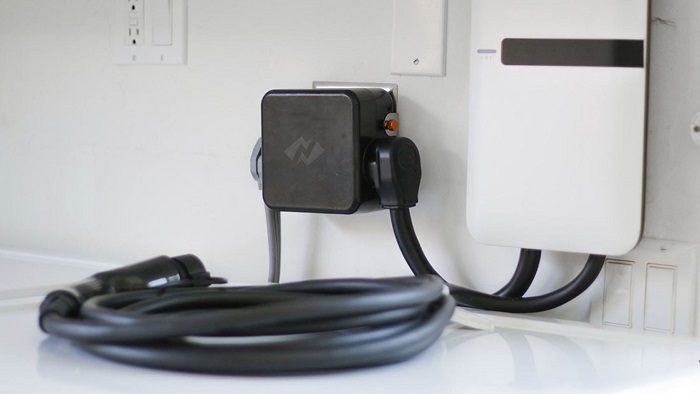
- It is crucial to emphasize that only licensed electricians should install NEMA 14-50 outlets. DIY installation can lead to serious safety hazards, including electrical fires, shock hazards, and damage to electrical systems. The knowledge and experience of electricians can guarantee safe installation procedures, correct wiring, and compliance with regional electrical codes.
- Avoid Overloading Circuits: Overloading circuits by drawing too much power from a NEMA 14-50 outlet can lead to overheating, damage to electrical components, and an increased risk of electrical fires. Users should be mindful of the power requirements of the devices they’re connecting to the outlet and avoid exceeding its rated capacity.
- Grounding Prong: The grounding prong in a NEMA 14-50 outlet plays a critical role in preventing electric shock. It provides a path for excess electrical current to safely dissipate into the ground, reducing the risk of electrical shock in the event of a fault or short circuit. Ensuring that the outlet is properly grounded is essential for maintaining electrical safety.
Compatibility of NEMA 14-50 Outlets
NEMA 14-50 outlets are indeed compatible with all standard electric vehicle (EV) charging adapters that use the J1772 connector. The J1772 connector is the standard plug used for Level 1 and Level 2 charging of electric vehicles in North America.
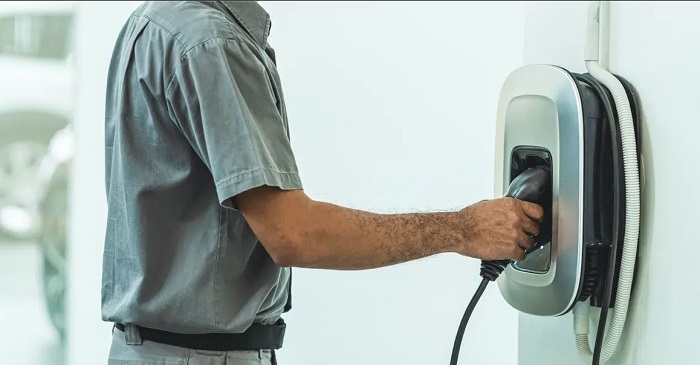
The NEMA 14-50 outlet’s high amperage and voltage rating make it particularly suitable for Level 2 charging, offering faster charging times compared to Level 1 charging from standard 120-volt outlets. EV manufacturers typically provide charging cables with J1772 connectors that can be plugged into NEMA 14-50 outlets with the appropriate adapter.
This compatibility ensures that EV owners can take advantage of NEMA 14-50 outlets for convenient and efficient charging of their vehicles, whether at home, at workplaces, or at public charging stations equipped with NEMA 14-50 outlets.
It’s worth noting that while NEMA 14-50 outlets are compatible with standard EV charging adapters, users should always verify the compatibility of their specific EV model and charging equipment with the outlet and adapter configurations available.
- Finding a Qualified Electrician
Installing a NEMA 14-50 outlet requires a qualified electrician to ensure safety and compliance with electrical codes. Here are some tips for finding the right professional:
- Licensing: Verify the electrician’s license is current and valid in your area. Most states require electricians to be licensed, and you can usually find this information on the licensing board’s website.
- Experience: Look for an electrician experienced in installing NEMA 14-50 outlets. This type of outlet is commonly used for high-powered appliances like electric vehicle chargers and requires specific knowledge and expertise.
- Online Reviews: Check online review platforms like Google, Yelp, and Angie’s List to see what other customers have said about the electrician’s work.
- Get Quotes: Obtain quotes from multiple electricians to compare prices and services. Be sure to ask about their experience with NEMA 14-50 installations and any additional fees.
- Insurance: Ensure the electrician carries liability insurance and workers’ compensation insurance. This protects you in case of any accidents or property damage during the installation.
By following these tips, you can increase your chances of finding a qualified and reliable electrician for your NEMA 14-50 outlet installation.
NEMA 14-50 Smart Splitter
A Smart Splitter typically incorporates advanced electronics and monitoring capabilities to manage power distribution effectively.

- How a Smart Splitter Works: A smart splitter utilizes advanced electronics to dynamically distribute power between two connected EV chargers. This technology monitors the available current from the NEMA 14-50 outlet and intelligently adjusts the power output to each charger, ensuring both vehicles receive optimal charging rates without exceeding the circuit capacity.
- Limitations of Smart Splitters: While smart splitters offer a convenient solution for dual EV charging, it’s important to note potential limitations. Compatibility issues may arise with certain EV charger models, and the overall charging speed will be limited by the available circuit capacity. Additionally, some smart splitters require a dedicated 50-amp circuit for optimal performance.
NEMA 14-50 outlets are commonly found in industrial settings, garages, and laundry rooms. Their primary purpose is to supply power to heavy-duty appliances like electric clothes dryers, welders, and air conditioners.
While not specifically designed for EV charging, NEMA 14-50 outlets can be used with adapters to charge electric vehicles. This offers a convenient solution for homeowners who already have the outlet installed. However, it’s crucial to consider safety aspects. Using the wrong adapter or exceeding the outlet’s capacity can lead to overheating, damage, and even fire hazards.
Therefore, it’s essential to consult a qualified electrician before utilizing a NEMA 14-50 outlet for EV charging. They can assess the outlet’s suitability, recommend appropriate adapters, and ensure safe and efficient charging for your electric vehicle.
Additional Resources (Optional)
- EV Charging Solutions Guide by ChargePoint:ChargePoint offers a comprehensive guide to EV charging solutions, including information on NEMA outlets, charging stations, and installation considerations.
- Electric Vehicle Charging at Home by the U.S. Department of Energy: The U.S. Department of Energy provides guidance on home EV charging, including information on outlet types, installation tips, and cost considerations.
- PlugShare: PlugShare is a popular platform for finding EV charging stations and resources. Their website includes articles, forums, and resources on EV charging, including information on outlet types and installation guides.
- Electric Auto Association (EAA): The Electric Auto Association is a nonprofit organization dedicated to promoting electric vehicles. Their website offers resources, forums, and articles on EV charging, including information on outlet types and installation guides.
- ClipperCreek Residential Charging Solutions:ClipperCreek offers a range of residential charging solutions, including NEMA 14-50 outlets and compatible charging stations. Their website provides detailed product information and resources for homeowners looking to install EV charging infrastructure.
- Tesla Support: Charging at Home: Tesla provides comprehensive support and resources for home charging, including information on NEMA outlets, installation guides, and recommendations for compatible charging equipment.

Henry Michael is a leading expert in EV charging station research, specializing in innovative solutions for electric vehicle infrastructure. With a passion for sustainability and technological advancement, he is dedicated to advancing the accessibility and efficiency of EV charging worldwide.

